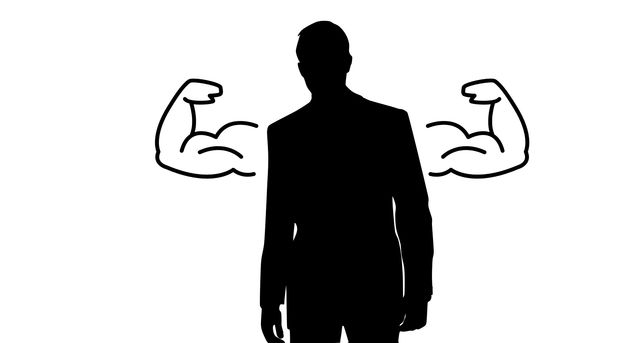Confidence
There's More Than One Kind of Overconfidence
The differences between overplacement, overestimation, and overprecision.
Posted October 17, 2019 Reviewed by Matt Huston
Key points
- Overconfidence is a dangerous decision bias that leads people to underestimate their own weaknesses and take disproportionately high risks.
- Measuring overconfidence can be difficult, because three different types of overconfidence exist.
- Psychologists differentiate between overplacement, overestimation and overprecision, which may have separate psychological origins.
Compared to the average person, how good is your driving? Are you better or worse than other car drivers?
If you believe you fall within the better half of drivers, you are in good company. Recurrent studies show that the vast majority of people believe that they have superior driving skills compared to others. For example, a recent survey showed that more than two-thirds of Americans believed they were better than the average driver. These findings are astounding because they simply do not add up. The concept of an average refers to a typical number, score or skill level in an existing population. Assuming that driving skills range from poor to excellent, with most drivers falling somewhere in between, it is almost statistically impossible that two-thirds of drivers are better than the average. This implies that US drivers are overconfident in their own skills.

Is overconfidence a problem?
While a lack of confidence can prevent people from pursuing opportunities, an excess of confidence may have even graver consequences. Overconfidence has been described as the “mother of all biases,” because it leads people to underestimate their own weaknesses and take disproportionately high risks. An unjustified belief in their own driving superiority, for example, could tempt people to disrespect fellow drivers and overtake other vehicles in risky maneuvers. Ultimately, such behavior could endanger the driver as well as all other road users. Therefore, spotting overconfidence and adjusting personal beliefs is crucial.
However, pinpointing and measuring overconfidence can be surprisingly tricky. One reason for this is the existence of three different types of overconfidence, which may have separate psychological origins.
Overplacement
The driving example from above falls within the category of overplacement, which generally describes any situation where people mistakenly believe that they are better than others. Additional examples include students recurrently predicting above-average test results and individuals having unrealistically high expectations for job interviews compared to fellow applicants.
Overplacement appears to be related to an ego-centric world view or narcissistic self-love. Interestingly, it often seems that people with the lowest abilities show the highest levels of overplacement. A possible explanation is that they lack the most basic competencies needed for social comparison and accurate self-judgments. The phenomenon—also referred to as the Dunning Kruger effect—has been suggested to explain the poor decision making of certain leading politicians.
Overestimation
The second type of overconfidence refers to the mismatch between people’s objective skills and their subjective perceptions of those skills. Put simply: People believe that they are better than they actually are. Overestimation is independent of the performance of other people and simply refers to the gap between a person’s judgment of their own skills and reality. One example includes athletes overestimating their own capabilities and consequently pushing themselves beyond reasonable limits. In fact, this may be the cause of frequent accidents during dangerous “selfie-stunts” like this yogi’s outright foolish attempt to balance upside down off an 82ft balcony before falling and breaking 110 bones. Another common example is people participating in publicly humiliating talent shows despite their obvious lack of any relevant skill. Despite its often detrimental consequences, overestimation is believed to be rooted in a self-serving bias: Through wishful thinking, overconfident individuals exhibit more positive attitudes towards challenging situations, and this can help to promote their performance.
Overprecision
The final type of overconfidence is overprecision, which refers to a person’s exaggerated certainty that their answer is correct. It can be assessed with knowledge questionnaires, which require participants to indicate their certainty in an answer with a percentage. Repeated results suggest that most individuals have too much faith in their own judgments, thus indicating high levels of overprecision. One explanation could be the social status and power commonly associated with people’s expressions of faith in their own statements. Overprecise politicians, for example, may appear more decisive, competent and even attractive than competitors who accurately report doubts and uncertainties. In those cases, overprecision would present an advantage for persuading voters and winning their trust.
The complexity of overconfidence
Despite the frequent references to overconfidence in everyday language, the term lacks a unitary meaning or even a single underlying cause. Furthermore, the type of overconfidence also determines how people react to different types of tasks. With regard to overestimation, for example, previous experiments found reliable evidence of a “hard-easy” effect: people were particularly likely to overestimate their performance on difficult tasks compared to easier ones. In the context of overplacement, however, quite the opposite was found. Considering oneself superior to other people was more common in the context of easier tasks compared to difficult ones.
If you or a friend are struggling with overconfidence, a first step may be to try to identify its origin. Is it rooted in an ego-centric personality, wishful thinking or an attempt of self-promotion? And how is this ulterior motivation going to influence daily judgments and decisions? Only a differentiated look at the problem will help to fully understand and eventually tackle it.


